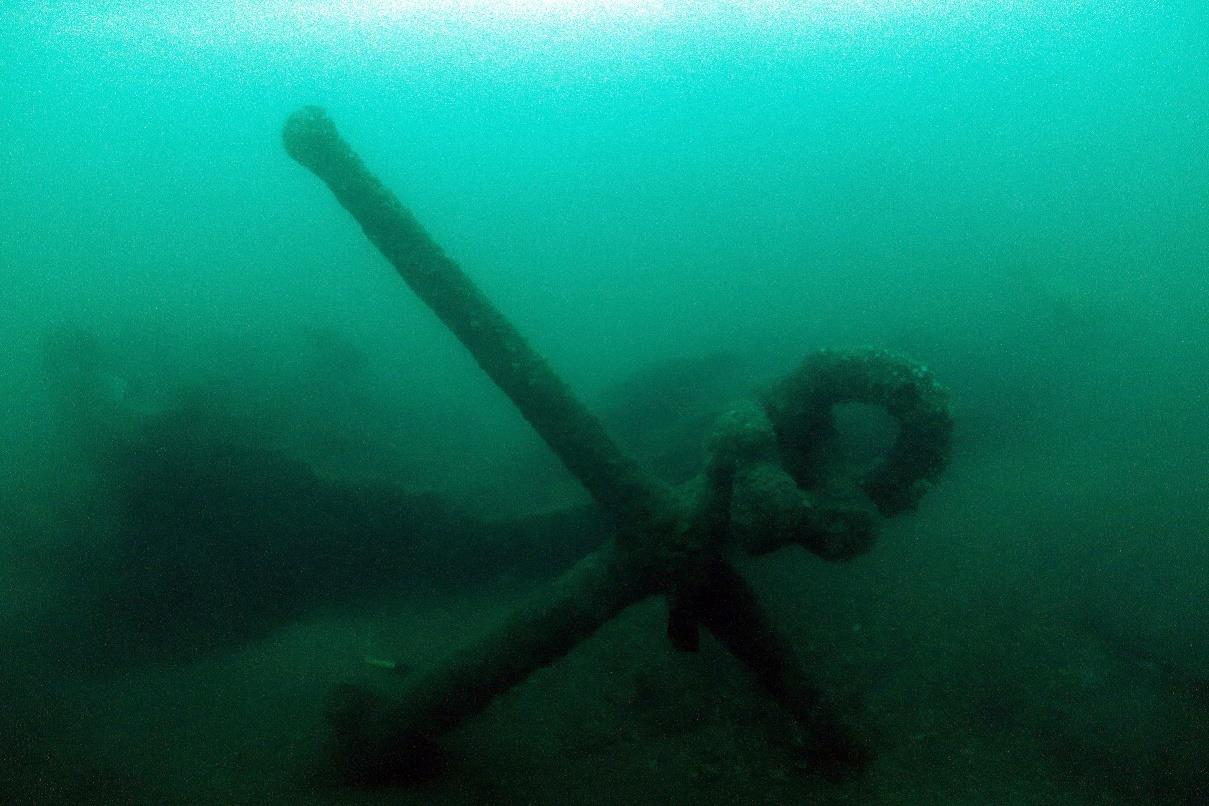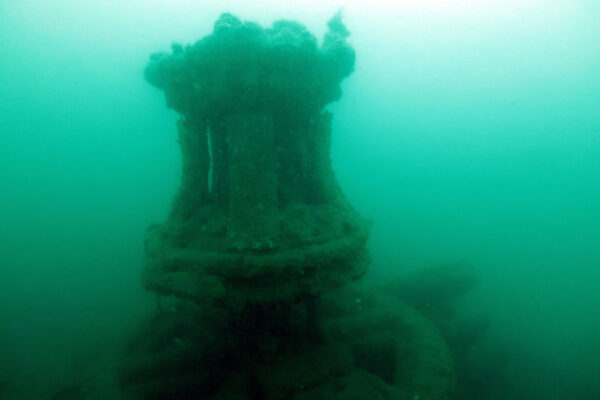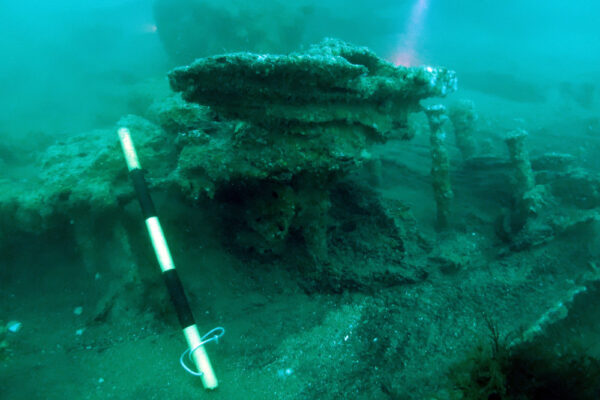Dorset shipwreck mystery solved by maritime archaeologists from Bournemouth University

Maritime archaeologists from Bournemouth University believe they have finally identified a shipwreck off the coast of Dorset, more than thirty years after it was discovered.
The team have concluded that the ‘Pin Wreck’ is an Admiralty mooring lighter, which was built in 1866 and is thought to have been used in the salvage operation of HMS Eurydice off the Isle of Wight in 1878.
Mooring lighters were towed vessels containing mechanical devices for moving heavy loads. They were used for laying moorings and in salvage work.
The Pin Wreck is named after hundreds of metal bolts which lie around it and was discovered off the coast of St Albans Head in 1990.

It is about twenty-four metres long, constructed of wood with yellow metal sheathings, and lies at a depth of around twenty-seven metres.
The wreck includes a large steam capstan on its stern driven by a steam engine that lies just in front of the capstan, admiralty mooring buoys, chain and anchors
The Bournemouth team dived the wreck in 2019 having viewed objects that had been recovered from the site in the 1990s by Nigel Bryant, a former employee of the university.
These objects included a ceramic fragment attached to a large pulley block marked ‘Portsmouth Dockyard’.
It was evident during the dive that the layout of the wreck suggested that it was a mooring lighter and the finds recovered from it suggested that it had a mid-19th century naval origin.
Research in the National Archives uncovered plans of two identical lighters from Portsmouth Dockyard, named YC 5 and YC8.
These were the only vessels whose precise details matched that of the wreck, but there was no record of their loss.
They then found a crucial piece of the puzzle in a copy of the Shipping Gazette from September 11th 1903.
This reported the sinking of a mooring lighter off St Albans Head in rough weather whilst on tow from Portsmouth to Portland.
Thirty men had to transfer from the lighter to its tug before it sank.
Later Sheilah and Martin Openshaw, who worked with the Bournemouth team, found a reference to the lighter lost in September 1903 that confirmed the wreck’s identity as that of YC8.
The BU team have now applied for the wreck to be designated as a protected site.

Dave Parham, Professor of Maritime Archaeology at Bournemouth University, who led the investigation, said: “This is a rare example of a type of service vessel which was essential for maintaining the operations of Britain’s ports in the nineteenth century, so it is vital that we preserve it.
“Its identity has remained a mystery for three decades but what we observed on our dive meant we could find the clues that could reveal the secrets of the wreck and understand how it ended up on the seabed.
“The materials the vessel is made from suggest a high-quality build, possibly linked to a Royal dockyard.
“The fact it appears to have been lost in service and was carrying substantial haulage equipment means it could offer valuable insight into the role these craft played in our maritime history.”
- Pictures: Bournemouth University.
Share us with your friends on social media, and have a listen to Bournemouth One online and on DAB for all your local news, traffic, jobs, weather, coastal info and more.
Register below for free regular updates via email.

